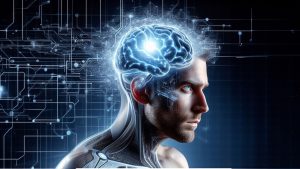Join us for a fascinating journey into the world of AI and scientific breakthroughs with Anima Anandkumar. In this engaging podcast, Anandkumar, a respected Bren Professor at Caltech and Senior Director of AI Research at NVIDIA shares insights into the basics of AI thinking, its cross-disciplinary impact, and the game-changing tensor methods. From tackling weather challenges to the role of AI in science, she simplifies the complex landscape of AI’s influence. Let’s explore how Anandkumar’s expertise shapes the future of AI in scientific exploration.
This episode of Leading with Data is available on esteemed platforms such as Spotify, Google Podcasts, and Apple. You can choose your preferred platform to engage with the insightful content.
Key Insights from our Conversion with Anima Anandkumar
- Algorithmic thinking remains crucial in guiding AI despite advancements in language models.
- Anima Anandkumar’s interdisciplinary background has significantly influenced her approach to AI research.
- Tensor methods, developed during Anandkumar’s PhD, are computationally efficient for unsupervised learning and have wide-ranging applications.
- The intersection of AI and numerical methods is rapidly evolving, with significant potential in various scientific domains.
- My Dojo and similar benchmarks set the stage for AI to learn and make decisions in open-ended environments.
- Foundational AI and machine learning knowledge are essential for aspiring researchers to contribute meaningfully.
- Some of the most demanding scientific problems, such as climate modeling and quantum chemistry, are limited by current computational capabilities.
- Interdisciplinary collaboration is vital to tackling complex scientific challenges with AI.
Now, let’s look at the questions from Anima Anand Kumar and her responses.
How Does Algorithmic Thinking Shape the Future of AI?
Algorithmic thinking is about framing the steps in a procedure and determining which is more efficient than others. It remains relevant even as language models improve at coding because we will still guide them. We’re moving towards higher-level abstractions as we transition from coding in assembly to higher-level languages. The challenge now is to show AI tools effectively, given that they can be error-prone, and to conduct research on making them more robust.

Can You Share Insights from Your Childhood That Fueled Your Interest in Data Science?
I was fortunate to grow up in a family that encouraged learning and exploration. My mother, one of the first engineers in our community, and my grandfather, a math teacher, instilled in me a love for math and sciences without gender segregation. My parents’ small-scale factory introduced me to the practical applications of programming, where I saw the physical impact of code on manufacturing automotive parts. This hands-on learning and exposure to interdisciplinary thinking were invaluable.
What Led You to Specialize in Network Sensors and Tensors During Your PhD?
My PhD journey began with signal processing and wireless sensor networks, now known as edge AI or the Internet of Things. I was fascinated by the trade-offs in transmitting data under energy constraints. This led me to probabilistic graphical models and eventually to tensor methods, which are theoretically guaranteed and computationally efficient for unsupervised learning, such as discovering topics in large text datasets.
How Have You Balanced Your Roles in Academia and Industry?
My career has been opportunistic, seeking the best way to make an impact. Initially, academia was the path for me to continue machine learning research. As the industry opened up, I found connections with companies like NVIDIA, where I could apply my research to real-world problems. Academia still plays a crucial role in considering the broader impact of AI methods, ethical considerations, and training the next generation of researchers.
What Are the Complexities Involved in Weather Forecasting with AI?
Weather forecasting traditionally involves simulating fluid dynamics and combining observations to predict weather. However, this process is computationally expensive and limits our ability to predict extreme weather events accurately. Our deep learning-based methods are much faster and cheaper, allowing for more ensemble members and better statistics for probabilistic forecasts. We also develop neural operators working at different resolutions and incorporating domain knowledge, like the Earth’s spherical geometry.
How Do You See the Intersection of Numerical Methods and AI Evolving?
AI for science is becoming increasingly popular, with applications ranging from carbon capture and storage to medical device design. Neural operators, which we’ve developed, allow us to solve partial differential equations efficiently, reducing the need for physical experimentation. This intersection will likely continue to grow, with AI playing a significant role in life sciences and other engineering domains.
Can You Elaborate on Your Work with the My Dojo Benchmark in Minecraft?
My Dojo uses Minecraft as an environment to test AI algorithms for open-ended learning. It challenges AI methods to build new skills and solve various tasks creatively continuously. We’ve connected it to GPT-4 to provide interactive, in-context learning, building a skill library for the AI to reference when encountering new tasks. This approach embodies the philosophy of lifelong learning and has the potential to fuel significant advancements in decision-making algorithms.

What Advice Would You Give to Aspiring AI Researchers or Students?
I emphasize the importance of understanding the fundamentals. Algorithmic thinking is crucial for guiding AI tools and conducting research to make them more robust. Understanding how models work is essential for research, even as we incorporate language models and other AI tools into our workflows.
What Do You Consider the Hardest Scientific Problem to Solve with Current Technologies?
Some problems are computationally bound, like climate models and quantum chemistry, which require more computing power than we currently have. Then, there are problems where we lack complete models, such as understanding processes within cells. Finally, some challenges combine simulation with physical experimentation, like nuclear fusion. Each of these requires interdisciplinary collaboration and innovative AI applications to make progress.
Summing Up
In the dynamic landscape of AI and science, Anima Anandkumar emerges as a guiding force. Her pioneering work, from developing AI algorithms to pushing the boundaries of open-ended learning in Minecraft, reflects a commitment to advancing AI’s impact. Aspiring researchers are encouraged to embrace foundational knowledge, and the discussion underscores the imperative of interdisciplinary collaboration to tackle formidable scientific challenges. Anandkumar’s journey, marked by accolades and a dedication to lifelong learning, positions her as a trailblazer shaping the future of AI in scientific exploration. Here are more details on this podcast!
Join us for more such insightful sessions with AI and Data Science leaders in our upcoming Leading with Data sessions!




